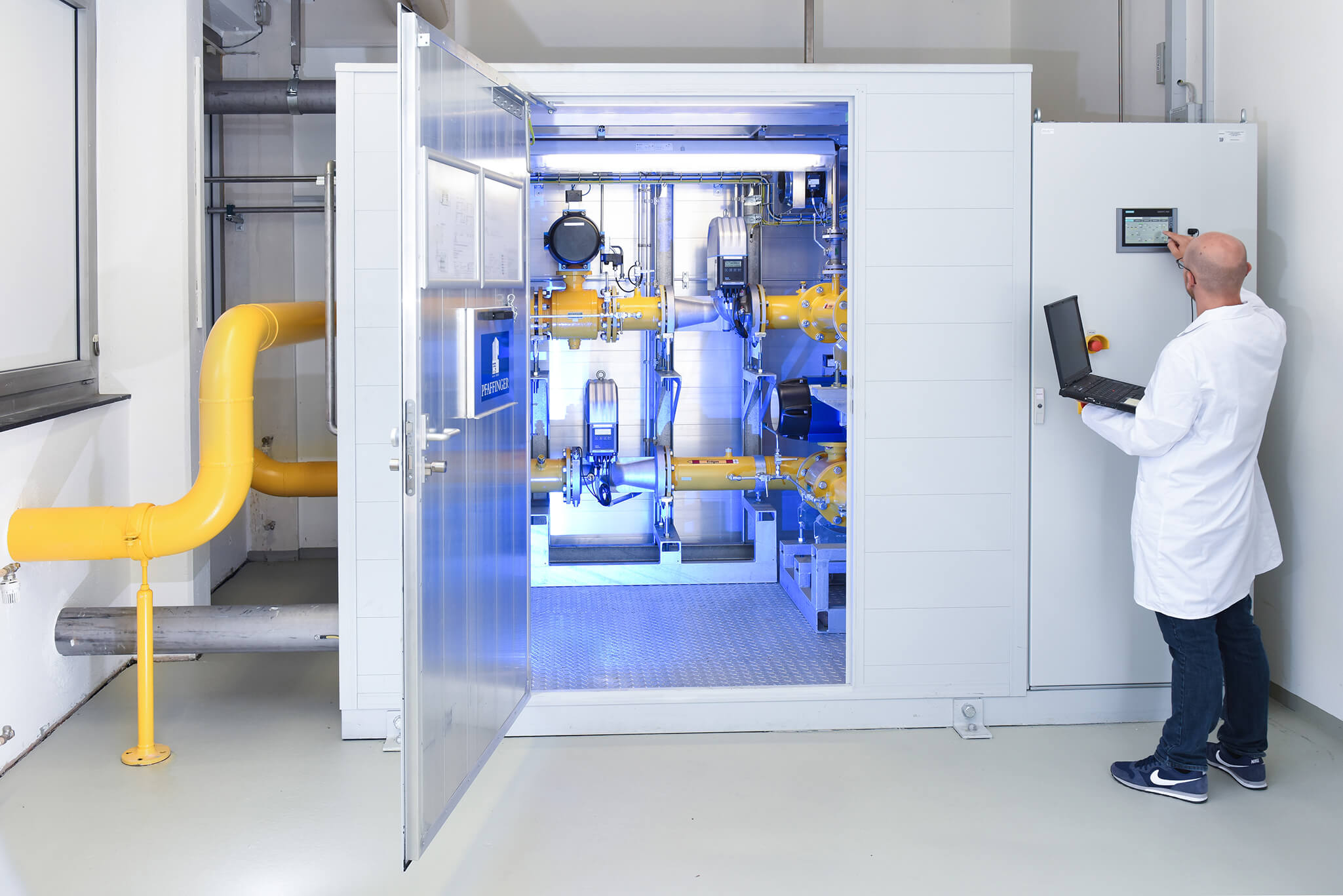A great advantage of using hydrogen in the gas network is that the required storage and distribution infrastructure is already available. Hydrogen can be fed into the German natural gas network with its enormous storage capacity, which is already very cost-effective. In addition, »green« hydrogen produced with at least 80 % eco-electricity is treated equivalently to biogas by the German energy economy law EnWG (and thus the ordinance concerning access to the gas network GasNZV). This significantly improves the economic boundary conditions and the operational flexibility for hydrogen injection.
Hydrogen Injection: Part of Electrolysis Business Models
Hydrogen Technologies and Electrical Energy Storage

To test Power-to-Gas systems in the municipal context and operate them with maximum economic and system-supportive benefits, Fraunhofer ISE carried out the »Freiburg Municipal Energy Association« A project together with other partners. As part of it, Fraunhofer ISE installed a modular hydrogen injection system in the local gas distribution network. The heart of the system is an electrolyzer with an electric connection power of 120 kW and a small hydrogen storage unit (the content corresponds to around 300 kWh of chemically stored energy), which enables slight temporal decoupling from the electricity grid and gas network. The location, construction and controls of the system are designed to also serve as a research platform, where new natural gas or hydrogen components, operating strategies or innovations to the gas network can be tested and investigated under real conditions. Several operating strategies to manage the system have already been developed, optimized in simulation environments and transferred to the real system. The applied operation management is based on the method of model-predictive control to optimize the usage of storage, feed-in capacity and day-ahead purchase of electricity. The operating goal is to use inexpensive “surplus” electricity in combination with incentives to use locally generated electricity from renewable sources, so that operation is as beneficial as possible to the system and the network, taking economic boundary conditions into account. The control algorithms have operated the system for several months. They demonstrated very robust operation due to a sliding calculation horizon and were able to tolerate deviations from predictions, disturbances and occasional outages of system components. The gas network with its extremely inexpensive storage is an essential component of the energy system. Via injection into the natural gas network, this storage capacity can already be used indirectly by small and medium-sized hydrogen plants: By using injection into the gas network as part of the gas distribution strategy, more flexibility can be created at low cost. With the installation of this research platform, Fraunhofer ISE can conduct further research in this important field for reliable energy supply based on renewable sources.
A Supported by the State Ministry for the Environment, Climate and Energy Economy in Baden-Württemberg, via the project agency established at the Karlsruhe Institute for Technology